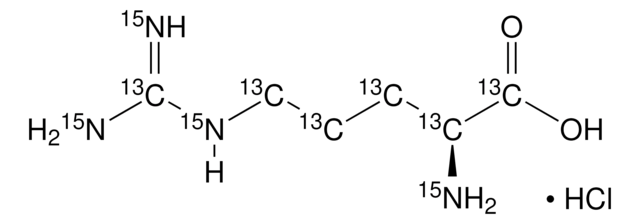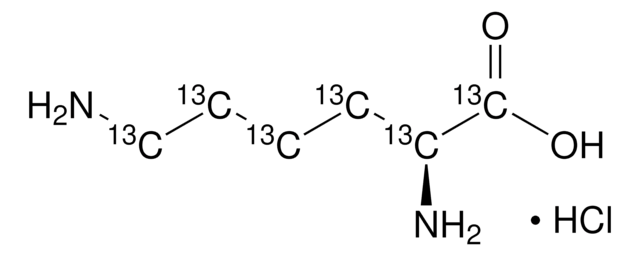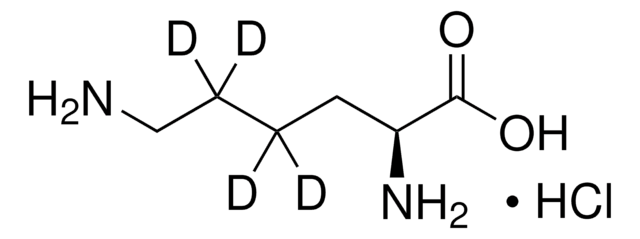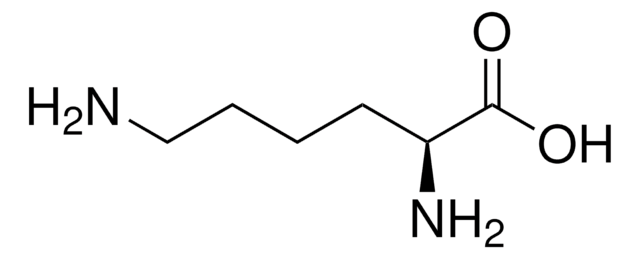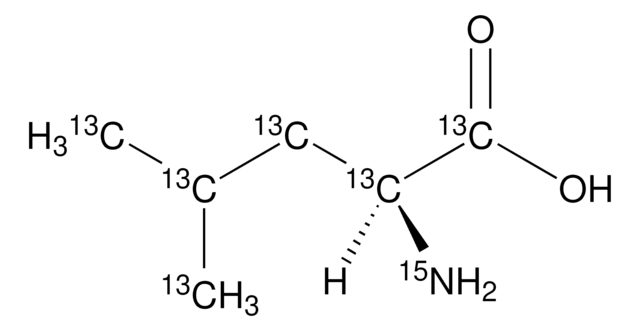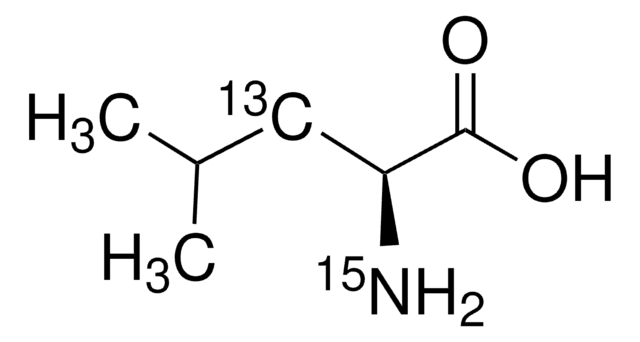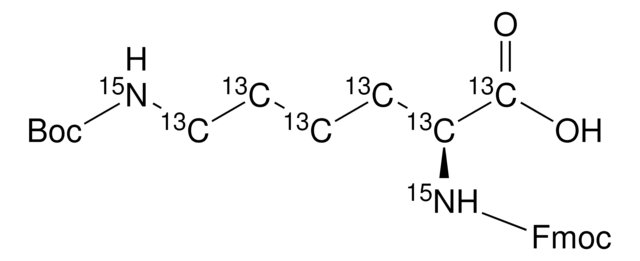608041
L-Lysine-13C6,15N2 hydrochloride
99 atom % 13C, 99 atom % 15N, 95% (CP)
Sinonimo/i:
SILAC Amino Acid, (S)-2,6-Diaminohexanoic acid-13C6,15N2 hydrochloride, 13C and 15N Labeled Lys, 13C and 15N Labeled lysine hydrochloride
About This Item
Prodotti consigliati
Purezza isotopica
99 atom % 13C
99 atom % 15N
Livello qualitativo
Saggio
95% (CP)
Forma fisica
solid
Attività ottica
[α]25/D +20.7°, c = 2 in 5 M HCl
tecniche
bio NMR: suitable
protein expression: suitable
Punto di fusione
263-264 °C (dec.) (lit.)
Spostamento di massa
M+8
Stringa SMILE
Cl.[15NH2][13CH2][13CH2][13CH2][13CH2][13C@H]([15NH2])[13C](O)=O
InChI
1S/C6H14N2O2.ClH/c7-4-2-1-3-5(8)6(9)10;/h5H,1-4,7-8H2,(H,9,10);1H/t5-;/m0./s1/i1+1,2+1,3+1,4+1,5+1,6+1,7+1,8+1;
BVHLGVCQOALMSV-GSMNGUNQSA-N
Descrizione generale
Applicazioni
- L-Lysine-13C6,15N2 hydrochloride has been used in pSILAC (pulsed stable isotope labeling by amino acids in cell culture) mass spectrometry to study protein profile in cells transfected with microRNAs.
- It has been used in SILAC isotopic labeling for the characterization of lysine racemase.
- It has been used in SILAC labeling for phosphoproteomic measurements in neuro-2a cells treated with and without GFKP-19 (2-pyrrolidone derivative).
Confezionamento
Prodotti correlati
Codice della classe di stoccaggio
11 - Combustible Solids
Classe di pericolosità dell'acqua (WGK)
WGK 3
Punto d’infiammabilità (°F)
Not applicable
Punto d’infiammabilità (°C)
Not applicable
Scegli una delle versioni più recenti:
Possiedi già questo prodotto?
I documenti relativi ai prodotti acquistati recentemente sono disponibili nell’Archivio dei documenti.
I clienti hanno visto anche
Contenuto correlato
Protein structure provides valuable information that can be used to infer protein function. The study of protein structure and mapping of protein interactions, expression levels, and location enables the identification of disease biomarkers and potential drug targets for therapeutic treatment.
Il team dei nostri ricercatori vanta grande esperienza in tutte le aree della ricerca quali Life Science, scienza dei materiali, sintesi chimica, cromatografia, discipline analitiche, ecc..
Contatta l'Assistenza Tecnica.